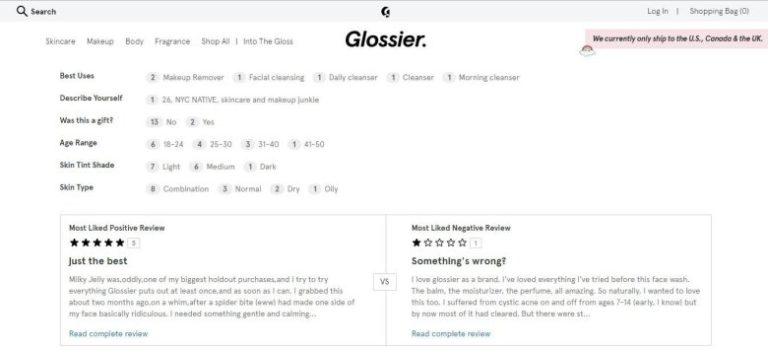3 Ways to Dramatically Reduce Your Return Rate.
Returns - the bane of any online brand’s existence.
We’re talking escalating supply chain costs. Stock that needs to be repackaged in order to be resold. Stock that can’t be resold due to seasonality, damage, or fraud. Oh, and did we mention all of the admin that’s involved?
There’s no doubt about it – returns remain to be one of the biggest challenges that online retailers face on a daily basis. Shopper expectations, partnered with the need to keep up in an outrageously competitive market means that if your returns process isn’t a) free, and b) easy, you’re going to a) miss out on potential sales, and b) lose return customers. As a result, returns have become such a routine part of the online purchasing process that buyer’s remorse is arguably a thing of the past.

At least 30% of all products that are ordered online are returned, compared to just 8.89% of items purchased in physical stores. So we can’t help but wonder – is providing an excellent customer experience by making the returns process a piece of cake just encouraging your customers to buy more stuff, so they can return more stuff?
Well, as important as it is to create a seamless returns experience for your customers, companies often forget to focus the same attention on decreasing the rate of returns that come through in the first place.
Today we’re going to look at 3 simple ways that you can start to tackle the returns rate for your online store.
About 22% of online returns are made as a result of products looking different in reality to what’s displayed on your website.
We’ve all been there. You order an item that seems to ticks all the boxes. Maybe it’s a knee-length dress that, in reality, skims your ankles because the model’s height wasn’t highlighted in the product description. Maybe it’s a watch that appeared to have an oversized face, but in reality is only the size of a 20 cent coin, because the product image didn’t show what it looked like on a wrist.
Context is everything. So your product descriptions need to be, for lack of a better term…descriptive. Detailed sizing guides, product specifications, and additional benefits should be included wherever necessary. And even if you do all of this, there’s a very good chance that your product descriptions are only going to be skimmed by shoppers. So cover all your bases with high quality, true to life product images and videos to ensure that they also tell your customers the story of exactly what the product is, who it’s for, and why they need it.
And while we’re on the topic of context, how could we not mention the mack daddy of bringing context to the purchasing experience – augmented reality. 40% of consumers would be willing to spend extra money on a product if they could experience it through augmented reality. So it might also be time to embrace AR technology to add a more sensory experience to your product pages – Sephora does it with Virtual Artist, IKEA does it with IKEA Place and now Asos has a virtual catwalk – so what’s it going to be for your brand?

Decreasing your returns rate is just one of the many benefits of integrating reviews and user generated content into your e-shop. In fact, there are more statistics about the power of UGC and online reviews than you can shake a stick at. 93% of customers find user-generated content to be helpful when making a purchasing decision. 71% of consumers feel more comfortable buying a product after researching user reviews. And 70% of consumers trust online peer reviews and recommendations more than professional content and copy.
So even though your online store needs to have top notch product descriptions, images, and videos, chances are that most shoppers are still going to want to see what other people who bought your product thought about it before they commit to the purchase. They want to see your products in the light of day. If you sell clothing, they want to see how they look on different body types. If you sell furniture, they want to know what kind of wear and tear can be expected. So the best thing that you can possibly do for online shoppers is to plug all of this information into your website, so that it not only adds that layer of social proof to your offering, but further supports the decision-making process, as well as the overall customer experience.
One of the best examples of a brand that has mastered leveraging user-generated content and reviews is Glossier, who attribute an incredible 90% of their revenue to word-of-mouth, free promotion.
Reviews feed into every product page, with the most liked positive review and most liked negative review featuring side by side at the top of the feed for all to see. They don’t gloss over (see what we did there…) any negative reviews. All feedback is welcomed. Meanwhile, over on Instagram, customers are encouraged to use the hashtag #glossier to share their photos and thoughts on the products – often reposted by the brand to their 1 million plus followers.

By empowering your customers with all of the information they need to make an informed decision about whether to buy your products or not, it’s going to have a knock-on effect on your rate of returns.
You may already be gathering customer feedback in the form of checkboxes on return slips. And that’s great. But those return slips are only going to be of actual value to you if these two things are happening:
1) You’re gathering information that’s relevant
and
2) You’re actually doing something with it!

It’s all well and good discovering that the top reason for your online returns is down to items not fitting correctly, but what exactly does ‘correctly’ mean? Take it a step further and give customers the option to indicate whether the item was ‘too big’ or ‘too small’. That way, you know that you need to add more information to your product descriptions or change the positioning of the sizing guides on your product pages, for example.
Or maybe you start to notice that you’re getting an influx of returns citing ‘damage’ as the primary reason. And maybe, you just switched to a new form of packaging in a bid to offset shipping costs.
Coincidence? Probably not.
You need to understand why customers are returning your products. It’s really as simple as that. Because all of those return slips will undoubtedly spell out for you what you need to do to take action and turn the returns train around.
The reality of running any kind of online store is that returns are always going to be part and parcel of the process. There’s no escaping them. And sure, you can leverage free and easy returns as a way to amplify the customer experience and even boost sales, but at the end of the day, prevention is still better than cure. And you can bet your bottom dollar that having an online store that’s optimised to limit the rate of returns provides just as powerful a customer experience than one that makes the returns process as smooth as possible.
Scurri connects commerce and optimises your online ordering, shipping and delivery to be simple, effective and adaptable to your needs. Contact us.

AUTHOR
Michelle McSweeney Content Marketing Manager, Kooomo
